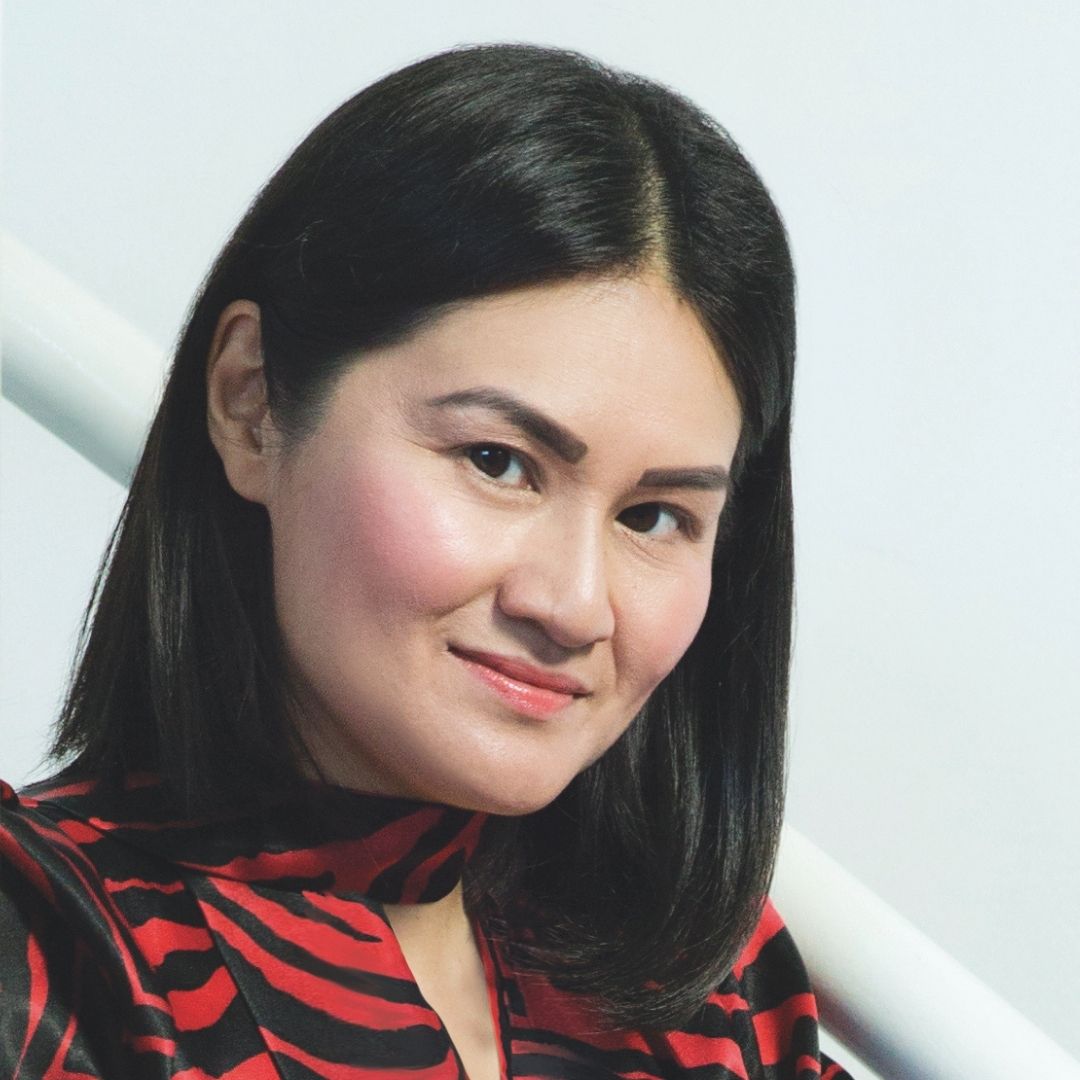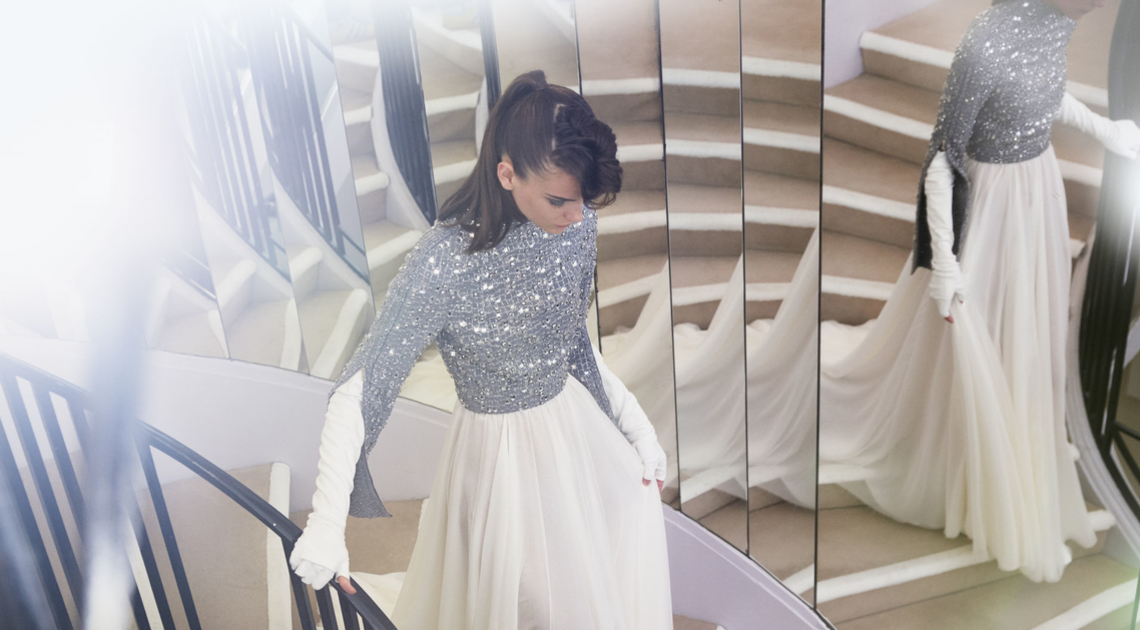
The iconic Parisian address of 31 rue Cambon has been immortalised, reimagined, and intricately woven through the Chanel house codes in many ways throughout the maison’s rich history, established and honed by Mademoiselle Chanel herself, then subsequently reinterpreted by Karl Lagerfeld and now Virginie Viard.
However, the newest edition of the Mademoiselle Privé exhibition in Tokyo offers perhaps the most intimate glimpse yet inside the universe of Gabrielle Chanel.
Grazia joined Pharrell Williams, Sofia Coppola, and Soo Joo Park in Japan on a wondrous journey via Haute Couture, High Jewellery, and Chanel Nº 5, into the very heart of the house.
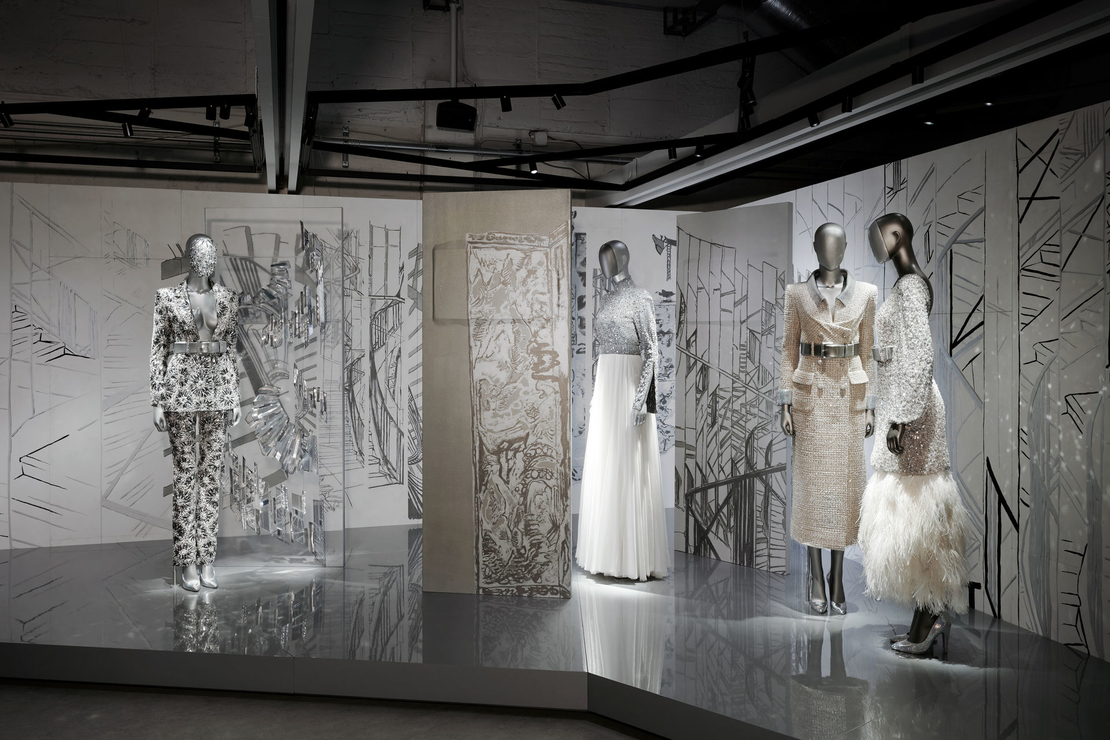
White
The latest curation of the world tour – which has already delighted visitors in London, Shanghai, Seoul and Hong Kong – unfolds in five evocative sequences and five emblematic colours.
The story begins with a wrought-iron staircase – representing the mirrored entrance to 31 rue Cambon leading from the boutique to the Haute Couture salons on the first floor – illustrating the first colour of this immersive experience: mirror white. At the top of the stairs, we’re greeted by a door embroidered with the legend ‘Mademoiselle Privé’ – the words written on the door to her creation studio – exquisitely handcrafted by Maison Lesage.
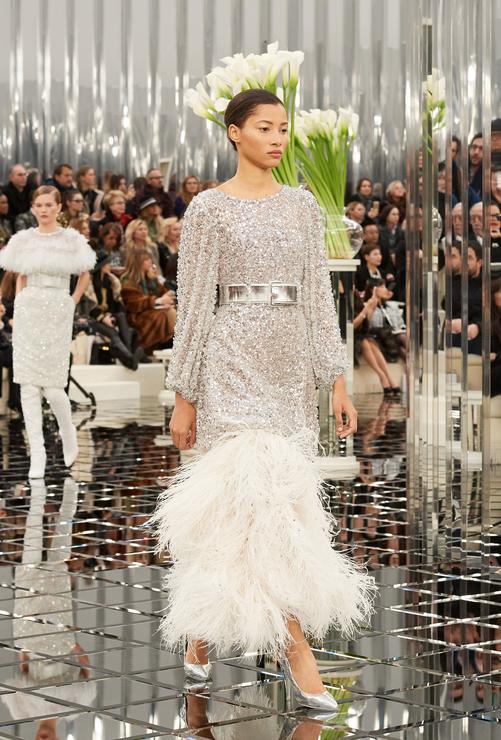
Taking its cue from this incandescent hue, iridescent sequinned Haute Couture looks set the tone, shimmering alongside the revolutionary Bijoux de Diamants High Jewellery collection Gabrielle created in 1932, becoming the first couturière ever to do so, and causing quite a stir among the establishment at the time.
Beige
Ever the pioneer, Mademoiselle Chanel was startlingly modern when it came to the way she decorated her space. For a start, she chose a beige suede sofa for rue Cambon, at a time suede wasn’t traditionally considered for soft furnishings. Look more closely at the matching cushions and you’ll see stitching that serves as a precursor to the quilting that would later go on to characterise the 2.55, which remains fashion’s most coveted bag to this day.
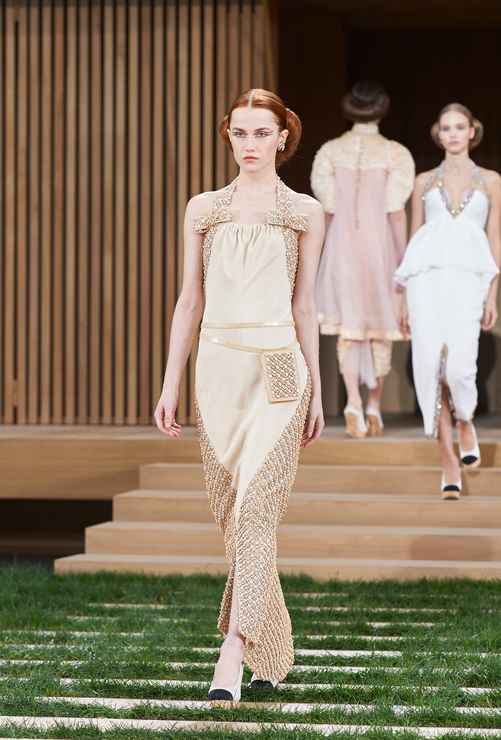
It also reappears resplendently in High Jewellery – the Matelassé cuff bracelet made from 1,189 diamonds and 308 Japanese cultured pearls – serving as an elegant example.
Beige has also become part of Chanel’s perennial palette, from the two-tone leather pumps with a black toecap (creating the clever trompe l’oeil illusion of making your legs look longer and your feet appear smaller), which first became part of the Chanel vernacular in 1957, and also in universe of perfumery and beauty. Beige Eau de Toilette was created by Jacques Polge in 2009 for Chanel’s Les Exclusifs – a tribute to the original perfume created in 1930 – and a make-up line named Les Beiges was launched in 2013.
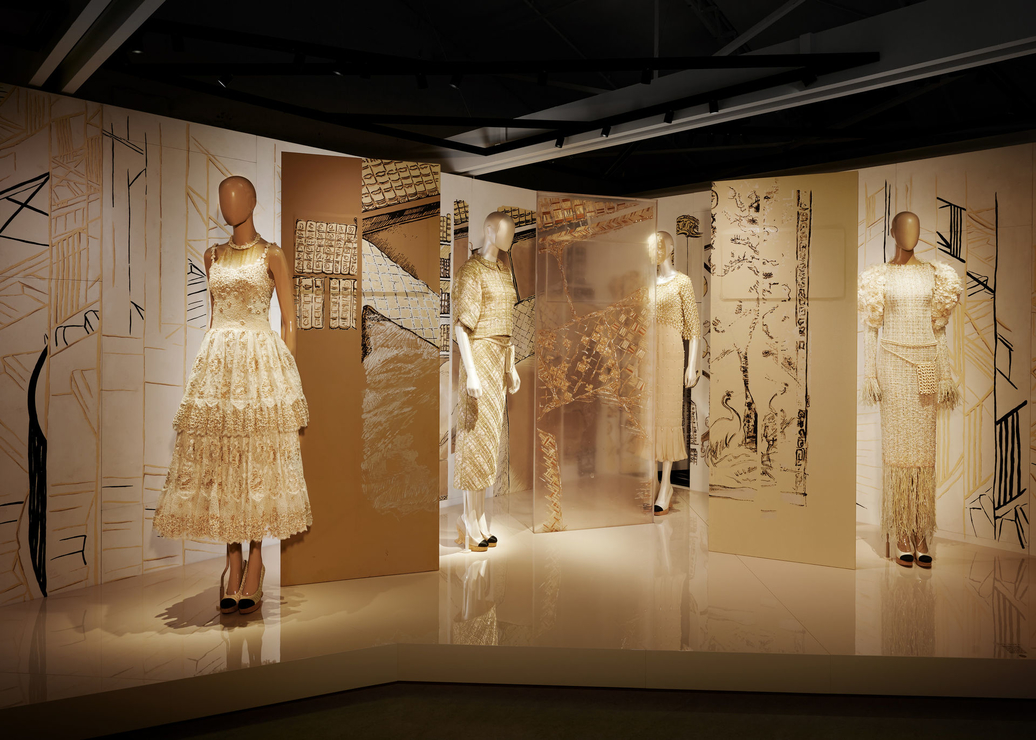
The eminently underrated hue comes into its own at the Mademoiselle Privé exhibition in Tokyo, embodied in the sublime sand-coloured crêpe gown from Haute Couture SS16, decorated with wood and glass beads and crystal rhinestone, which took skilled artisans an astonishing 2,200 hours to embroider; and a lace jacket and dress adorned in gold thread and embellished with gold braids from the same collection, which appears alongside it.
Black
Now ubiquitous in today’s fashion vernacular, it is truly hard to comprehend that there once was a time when the colour black was reserved for mourning, religious vestments, and uniforms.
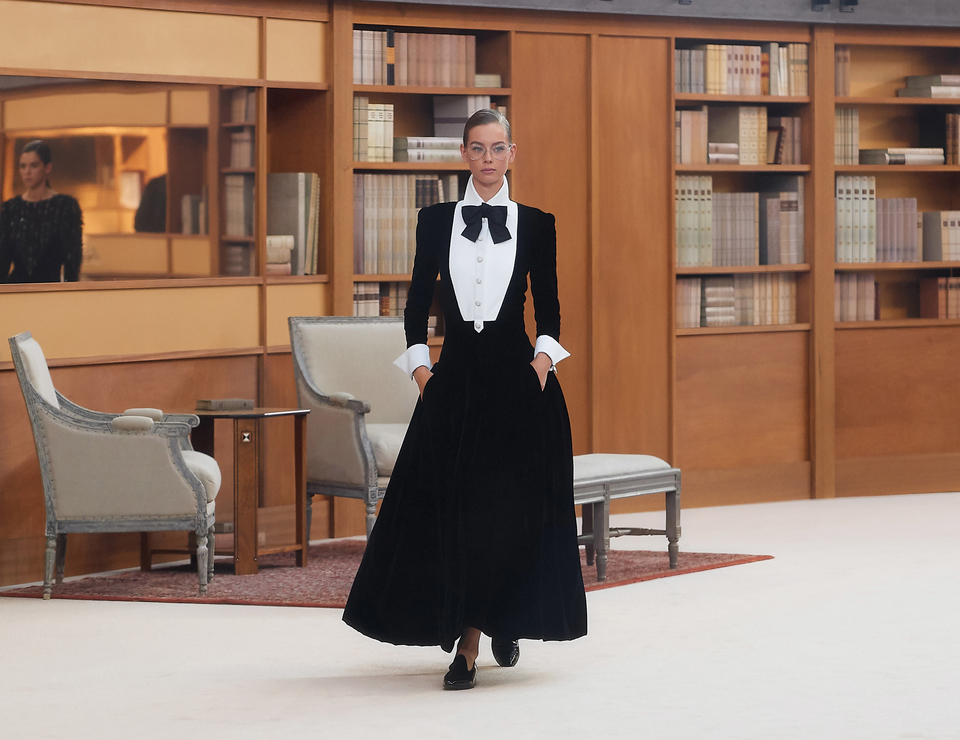
When her mother died of tuberculosis, Madame Chanel was sent by her father to be cared for by nuns at the Cistercian Abbey in Aubazine. Their monochrome habits made their mark on the 12-year-old Gabrielle Chanel, and she went on to reclaim black and revolutionise the way it was seen – from being only commonly seen on nuns and the black smocks of little orphan girls to creating the Little Black Dress in 1926, elevating black to the ultimate symbol of sophistication.
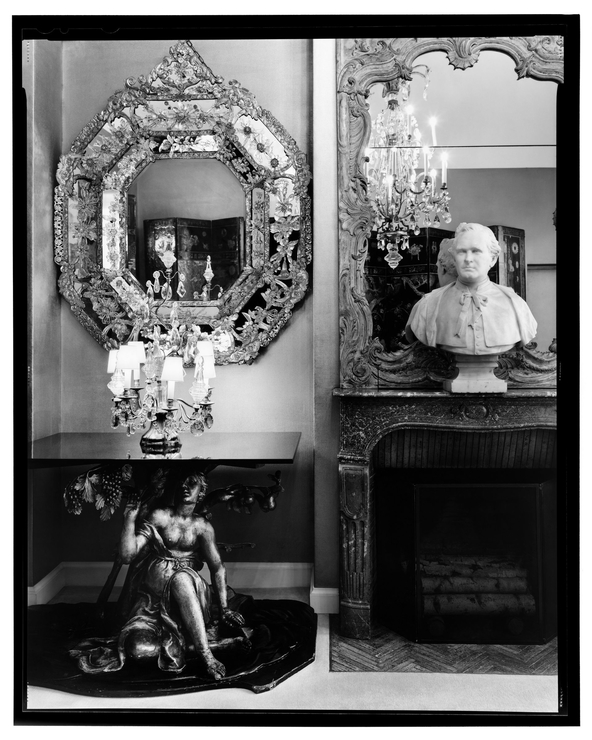
Black runs through Mademoiselle Chanel’s apartment, from the wrought-iron work on the staircase to the Coromandel lacquered screens decorating the dining room, and continues to be an inspiration.
Red
For her couture debut, Artistic Director Virginie Viard paid a refined and respectful tribute to the strict, starched nuns’ habits that surrounded Mademoiselle Chanel in her early years, with a precisely executed bustier dress in black duchess satin and a trompe l’oeil-effect petticoated skirt in black velvet with a plastron and tuxedo collar embellished with a bow for Chanel Haute Couture Autumn/Winter 2019. This breathtaking piece quite rightly takes pride of place at the Mademoiselle Privé exhibition alongside a Lagerfeld-era 3-D printed suit.
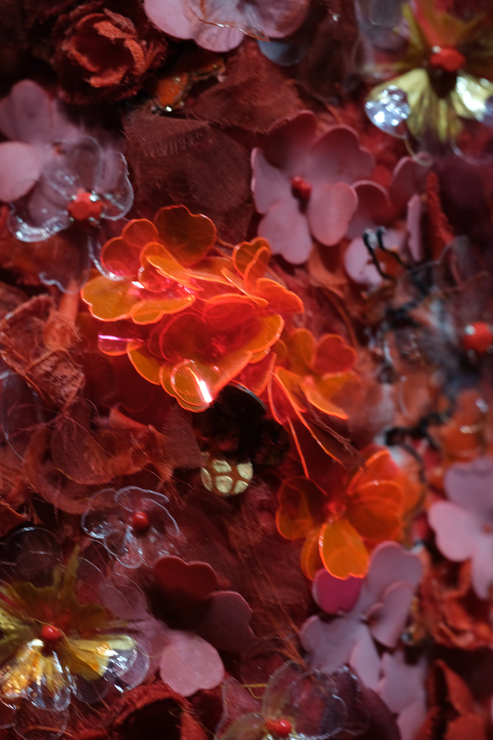
Mademoiselle Chanel certainly knew how to make our hearts beat faster, and her affinity for the colour she associated with life, power, splendour and wealth is reinforced in the red lacquered screens and leather-bound books surrounding her writing desk at rue Cambon.
Nowhere is this more evident than the red sequence of the Mademoiselle Privé exhibition. Most dazzling is a short neoprene number from the Autumn/Winter 2014 Haute Couture collection, covered in a profusion of red, orange and ivory silk crêpe flowers, and further embroidered with red stones that took 610 hours to affix. No less impressive is the red chiffon dress with a pleated over-dress from the Spring/Summer 2015 Haute Couture runway, which, despite its comparative simplicity, took the Flou Ateliers 400 hours to complete.
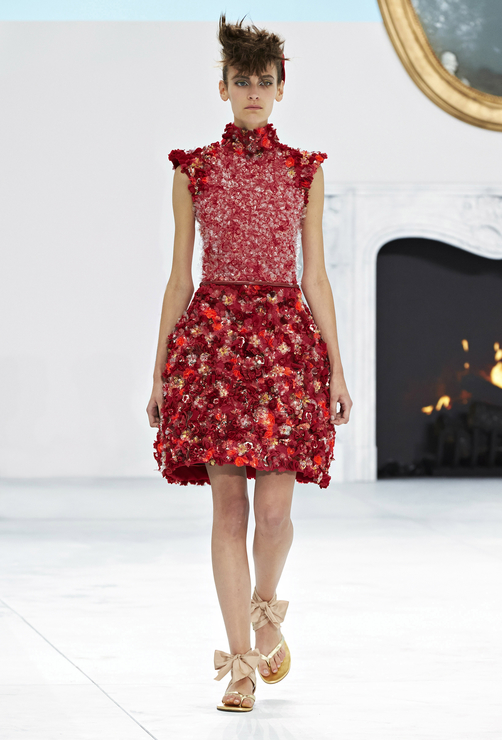
Meanwhile, who could forget cult French film director Luc Besson’s interpretation and immortalisation of Estella Warren skipping through the snowy Parisian streets as Little Red Riding Hood in the 1998 short film, Chanel Nº 5: Le Loup (French for The Wolf), in a cinematic celebration of Mademoiselle Chanel’s signature scent.
Also setting our pulses racing is screenwriter, producer and director Sofia Coppola, upon whom was bestowed the honour of making a kooky mini movie In Homage to Mademoiselle, featuring Chanel stalwarts past and present, from Marilyn Monroe and Catherine Deneuve, to Pharrell Williams and Lily-Rose Depp, set to the soundtrack of Oblivion by Grimes, which plays at the end of the exhibition in celebration of its Tokyo edition.
Gold
Glamorous but never garish, gold accents prevail throughout Mademoiselle Chanel’s pied-à-terre, from the grand Baroque mirror over the fireplace to the wheat-sheaf table commissioned from the goldsmith Robert Goossens. Having been raised surrounded by the decorated vestments of the clergy, gold would inform her sartorial and interior design decisions, all of which continue to serve as a rich source of inspiration for her successors, from the late Karl Lagerfeld to Virginie Viard.
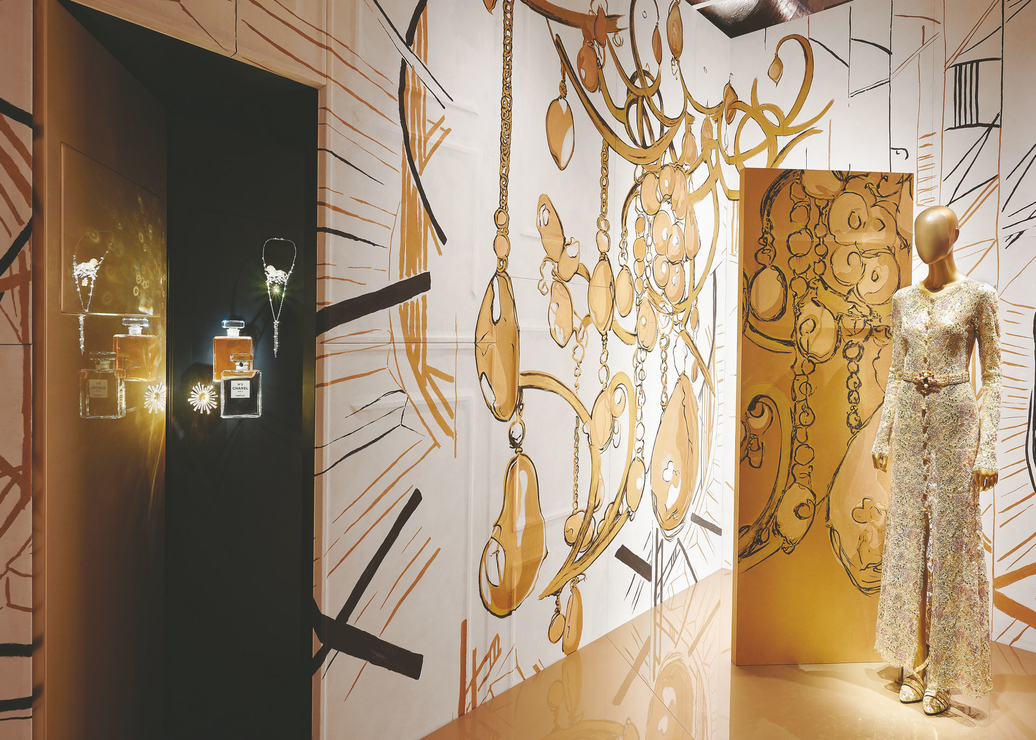
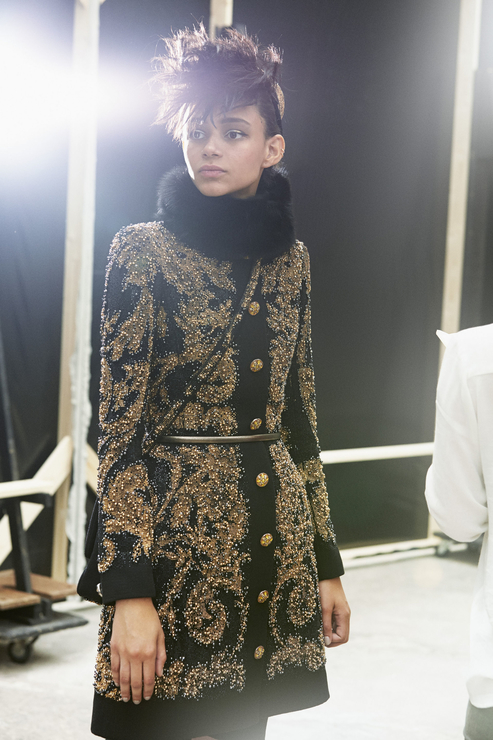
Mademoiselle Chanel always believed that every garment should be as beautiful on the inside as it inevitably would be on the outside, and this unprecedented private look into her inner sanctum at rue Cambon proves this was a philosophy she lived by.
What is endlessly fascinating about the house codes is that Gabrielle Chanel’s own talismans, trinkets, personal possessions and childhood memories became the lasting codes of the Maison and have been artfully reinterpreted both on the catwalk and in the Mademoiselle Privé exhibition that’s currently thrilling Tokyo and revealing the soul of Chanel for a whole new generation to discover.
Photos: Supplied



